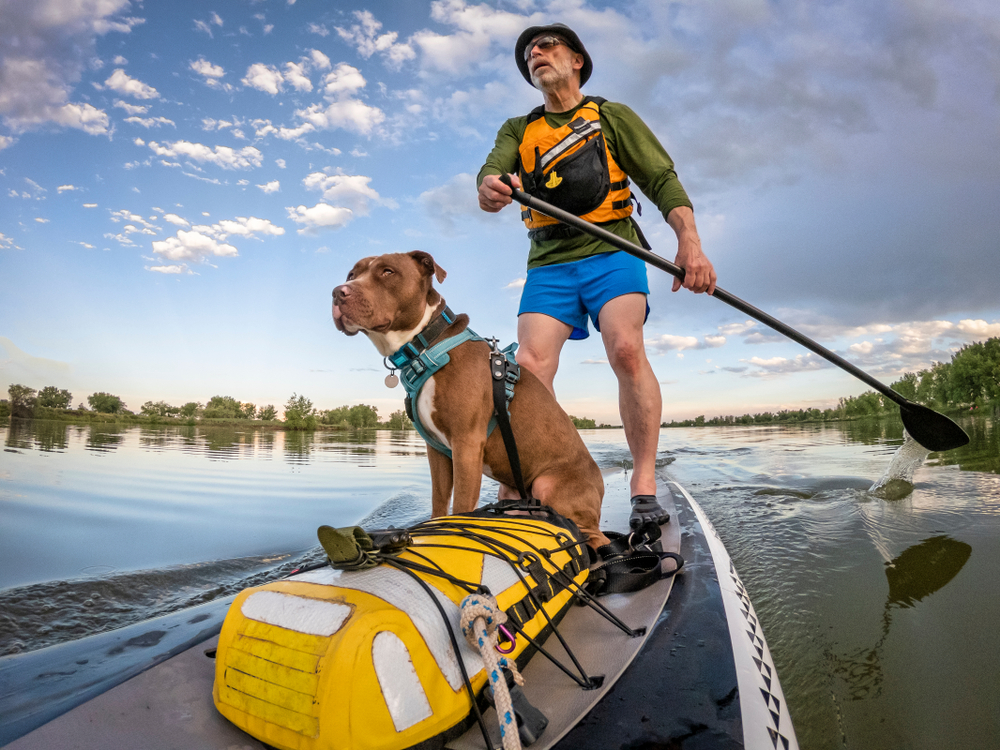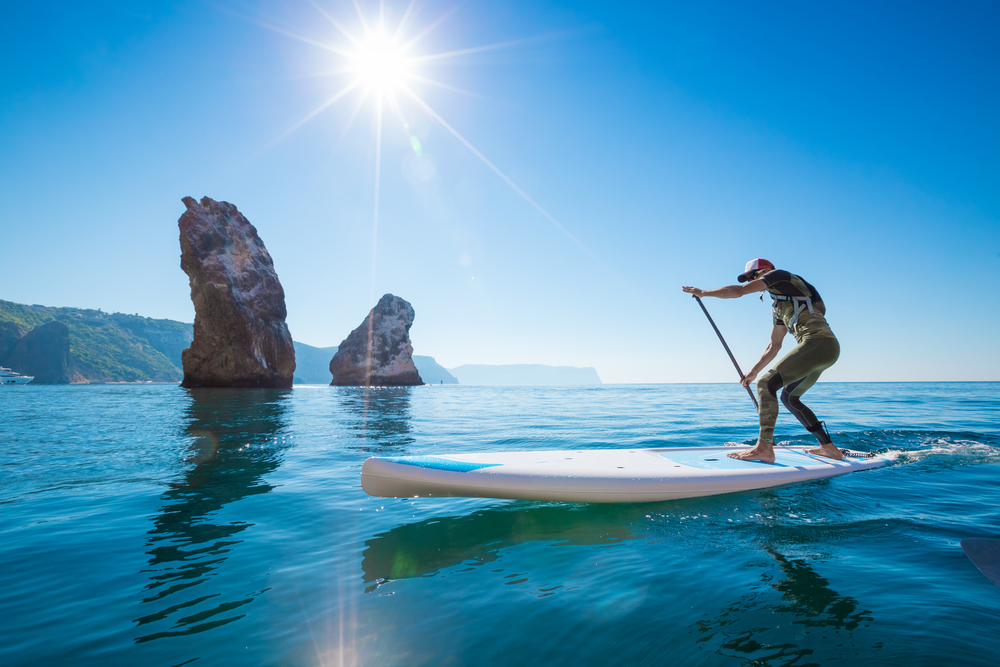Paddleboarding is a pretty broad term used to describe a watersport where someone kneels or lies on a paddleboard or surfboard, using their arms to propel themselves in the water. In recent years, it’s evolved into what we’ll cover here: SUP, or stand-up paddleboarding. In SUP, one stands on a floating board and maneuvers with a paddle or pole.
Though paddleboarding has become increasingly popular as a sport and leisure activity in the last couple decades, its origins may go all the way back to ancient times. From South America to Europe, people have practiced the art of standing up while paddling a water vessel to travel and fish. As a more modern sport, however, history points to a region renowned for surfing and other watersports: Hawaii.
SAFETY FIRST
If you live near the water, there are plenty of shoreline shops and tour operators to help you learn how to paddleboard. But as you head out, here are some safety tips to keep in mind. As SUP has become a phenomenon in the watersports world, the US Coast Guard has determined that SUP boards are considered vessels, if operated outside a swimming or surfing zone.
This means that if you’re heading out to more remote areas, or to any stretch of water beyond these approved zones, you’ll need to take extra precautions. This includes bringing along sound devices for alerts, lighting devices after sunset and a life jacket (children 12 years old and younger must wear them at all times). If you’re interested in exploring paddleboarding as a new hobby, make sure to do your research so you’re in the know about all safety requirements.
SUP: A WATERSPORT FOR ANYONE
There isn’t just one way to enjoy paddle boarding, making it an accessible sport for people of all ages and outdoor interests. If you’re new to the sport, you’ve most likely observed SUP as a leisure activity, with people cruising around a waterway as a means of exploration. You can enjoy this form of SUP in any body of water, from oceans and lakes to canals and estuaries.
SUP has also joined the world of surfing, where the SUP surfer maneuvers their paddle to course through the water. As this method relieves the surfer from needing to push up from the board to catch a wave, it can be a great alternative for surfers who have shoulder or leg injuries. It’s by no means a less intense version of surfing, though! Some SUP surfers take on pretty epic adventures.
The yoga community has also gotten in on the fun. As you might guess, SUP yoga is the art of practicing yoga atop a paddleboard. Calm water is essential for this activity, and using inflatable paddleboards can be helpful. If you’re looking to level up your yoga practice, SUP yoga can offer some fun, new challenges.


